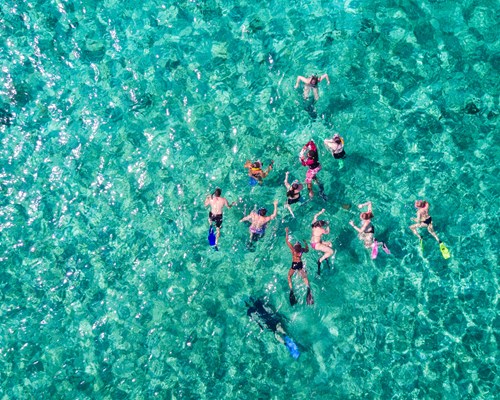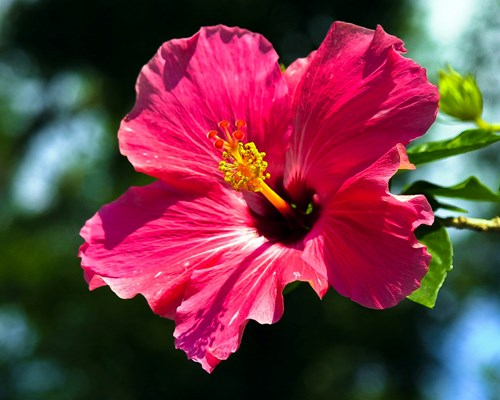When holidaying in Trinidad and Tobago, we guarantee you won’t be stuck for things to keep you occupied. With plenty of beautiful natural and historic landmarks, such as; Argyle waterfall and the port of Spain, Trinidad and Tobago are any sightseer's idea of paradise. So grab your camera and walking boots and get ready to explore all that Trinidad and Tobago have to offer.
Top 10 attractions & excursions in Trinidad and Tobago

1. Port of Spain, Trinidad
Take in the cultural sights of the country’s capital: The National Museum and Art Gallery sits opposite the Memorial Park, in a building titled the Royal Victoria Institute. Learn about the island’s past, from the days of the Amerindians to industrial times. The Holy Trinity Cathedral on Abercromby Street is a mix of Georgian, Gothic and Victorian in its architecture. A labyrinth and Garden of Peace are newer additions to the cathedral as places of prayer. One of the ‘Magnificent Seven’ mansions along Maraval Road opposite Queen’s Park Savannah, Stollmeyer’s (pictured) was built in Scottish colonial style from brick, limestone and Italian marble in 1904.

2. Caroni Bird Sanctuary, Trinidad
The Caroni Swamp is a protected mangrove area – T&T’s second largest wetland - covering around twenty square miles in western Trinidad. Great egrets, grey herons and sea hawks are just a few of the bird species that can be spotted here. Our favourite time to visit is in the evenings, when ibises fly overhead transforming the trees into a flash of red as they return from feeding in Venezuela to roost.

3. Asa Wright Nature Centre, Trinidad
Slap bang in the middle of Trinidad’s Northern Range, the Asa Wright Nature Centre spans almost 1500 acres on an old plantation in the Arima and Aripo Valleys. This not for profit organisation was set up in the sixties by a team of bird watchers keen to preserve the area and learn more about the species. Guides lead fascinating and beautiful nature walks setting off in the morning and afternoon, and lasting about an hour and a half. Along the way, you can look out for 166 species of birds, including the White-bearded Manakin, Channel-billed toucans, Copper-rumped Hummingbird and American Pygmy Kingfisher.

4. Nylon Pool, Tobago
Mother Nature’s created a true treat for tourists: a natural swimming pool and sand bar in the Caribbean Sea, to the south of Buccoo Reef. Locals speak of the healing and rejuvenating powers of the place. To get here, look out for companies running glass-bottomed boat trips.

5. Little Tobago
A mile or so off the NE coast, Tobago’s mini-me covers 250 acres. It has been a bird sanctuary since the twenties, and a lot of people call it ‘Bird of Paradise Island’ after Sir William Ingram bought the land in the early 20th century and introduced the species to it. Boat trips run from Speyside and twitchers can look out for the likes of the red-billed tropicbird, brown booby, red-footed booby, blue-crowned motmot and spotted sandpiper. The footpaths here lead to some gorgeous viewpoints over the islet to Tobago proper.

6. Main Ridge Forest Reserve, Tobago
Shortlisted for UNESCO protection, this is the western hemisphere’s oldest protected rainforest. Forming the backbone of the island with forest covered volcanic hills, it’s the pride and joy of the island and hub of ecotourism. 200+ species of bird call this spectacular part of the planet home, and you can spot them on guided tours (just don’t forget insect repellent!).

7. Argyle Waterfall, Tobago
The Argyle is one of the most beautiful falls on the island, reached by a rainforest trail and pouring down from 54 metres into a natural pool. Take a dip in the pool at the bottom. It’s part of the Roxborough Estate (formerly a sugarcane plantation), and you can sort out entry and a guide through the Visitor Service Co-Operative booth.

8. Fort King George, Tobago
Looking over the town and sea, the fort was built in the 1770’s when the English and French were grappling for ownership of the island. You can still see where the cannons, barracks and officer’s mess stood. Renovated parts now house the Tobago Museum, where you can view artefacts from the times of the Amerindians.

9. Adventure Farm & Nature Reserve, Tobago
A dozen acres of nature reserve, near Plymouth town, where you can enjoy close encounters with hummingbirds, cocricos, woodpeckers, jacamars and more. The area is also a working organic plantation, growing bananas, mangos, papaya and guava – the owners usually let you pick fresh fruit and pay for it.

10. Pigeon Point, Tobago
The Pigeon Point Heritage Park juts out into the Caribbean Sea on the south end of Tobago, and at its tip is a seriously beautiful beach. Which is sometimes seen as three separate beaches: Main Beach, then on either side of it North Beach and South Beach.

